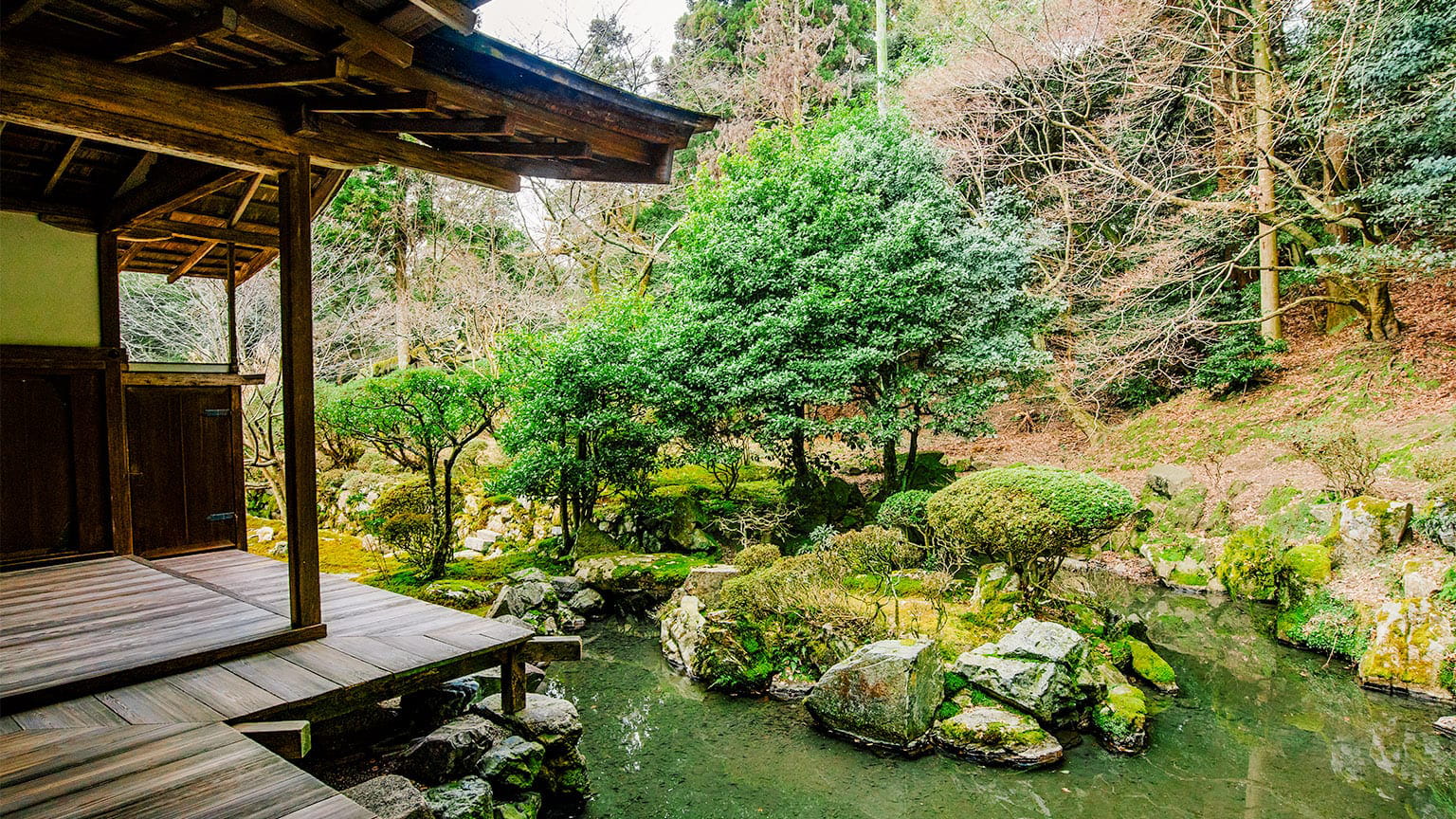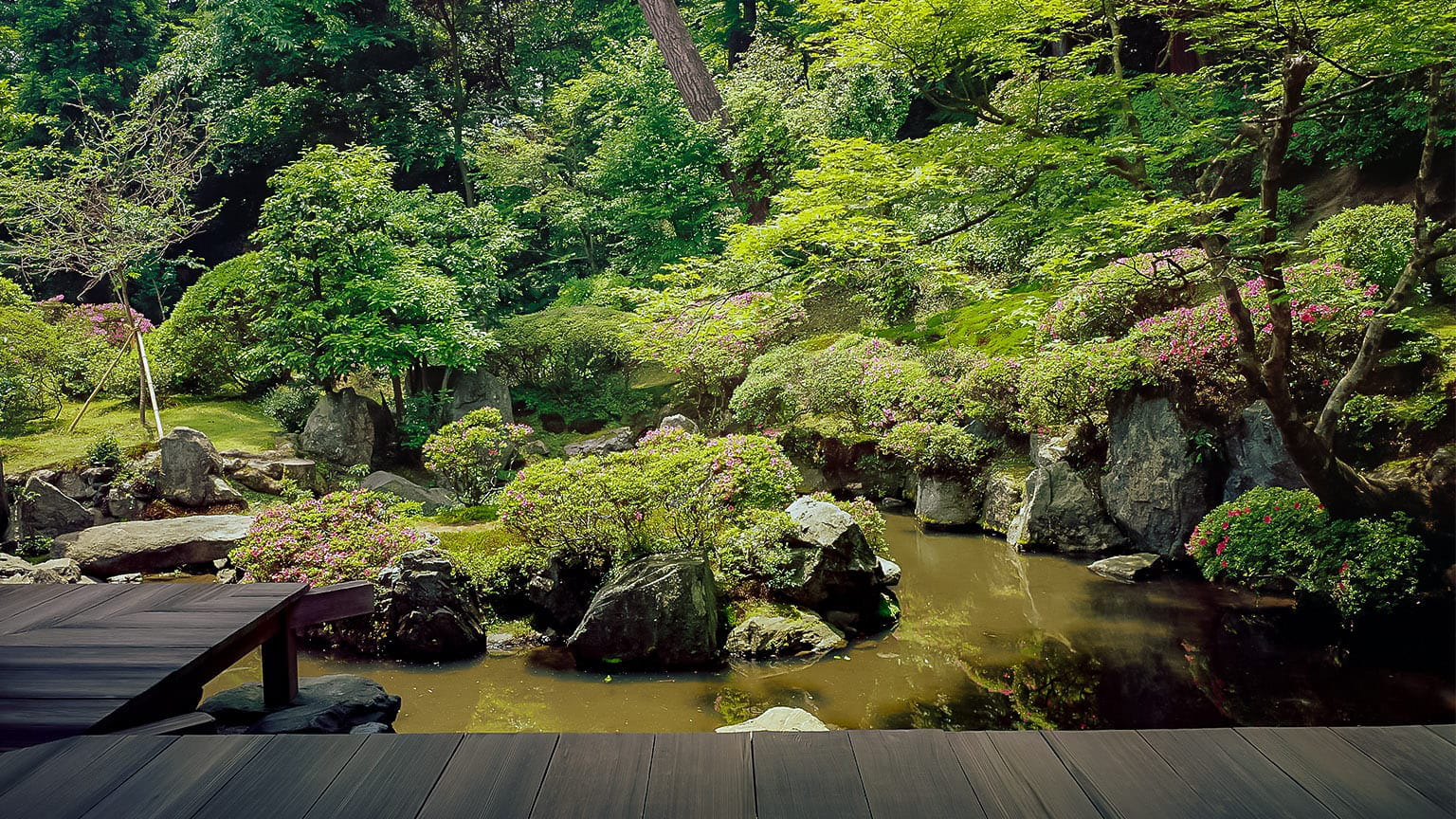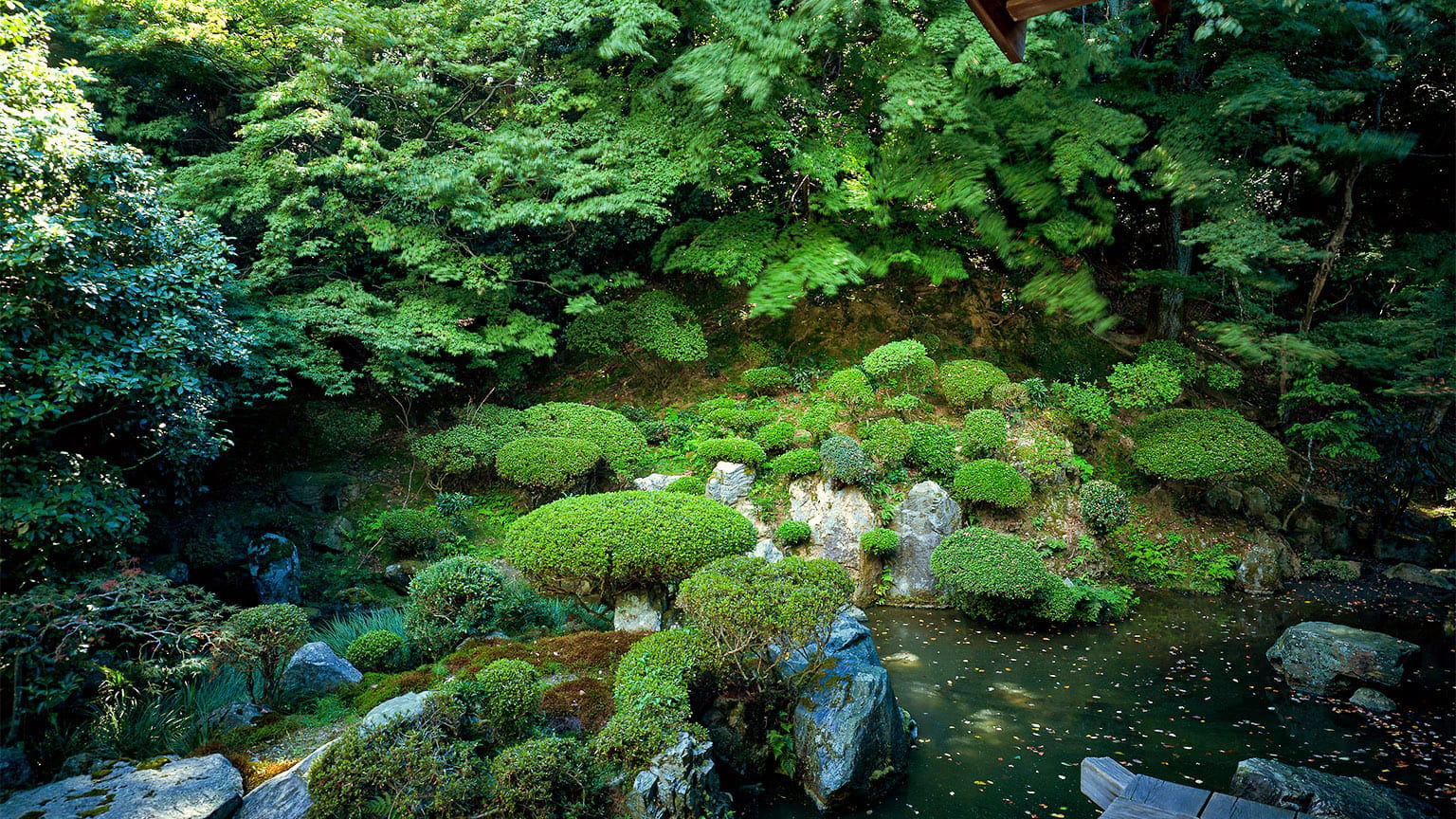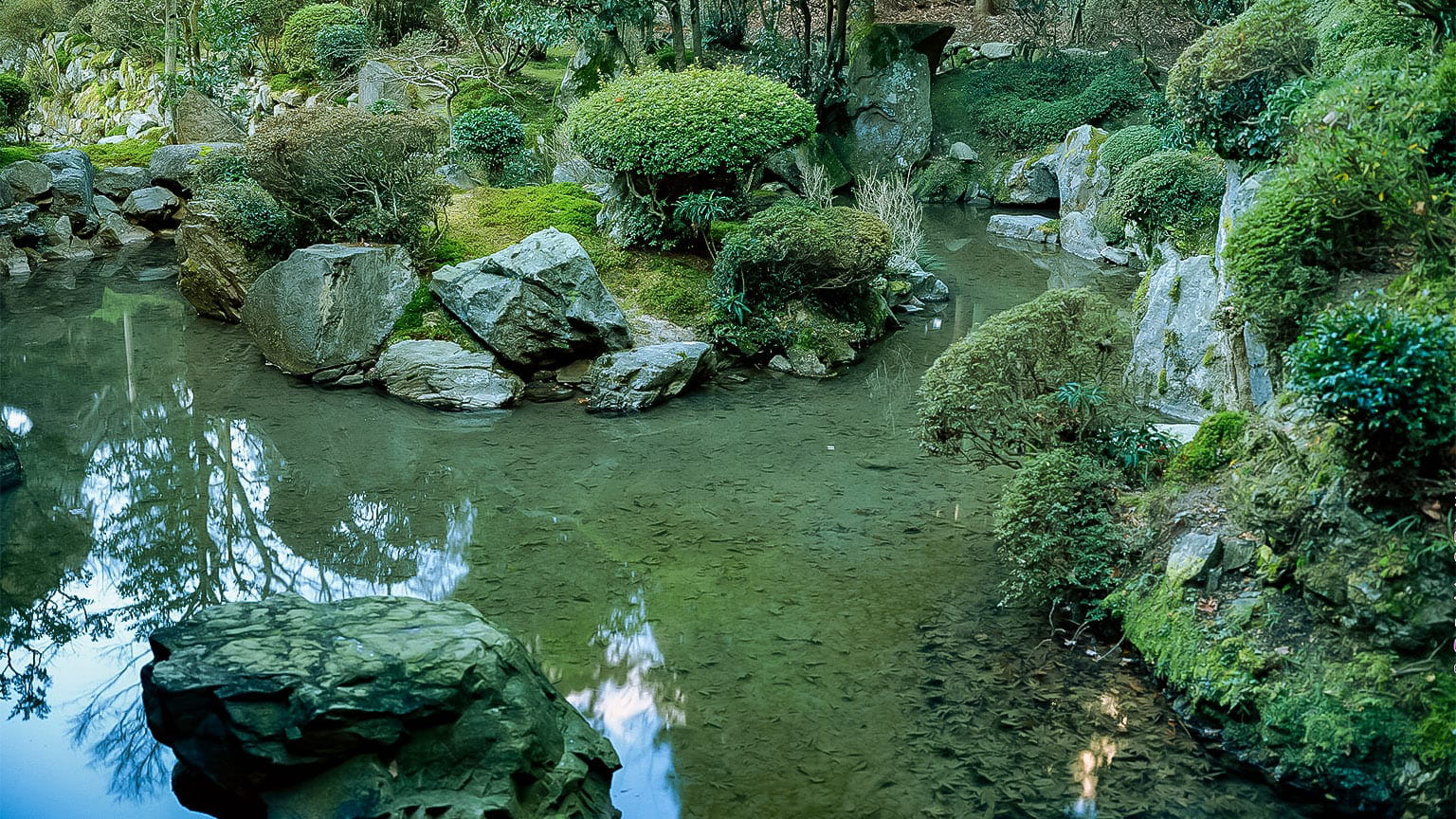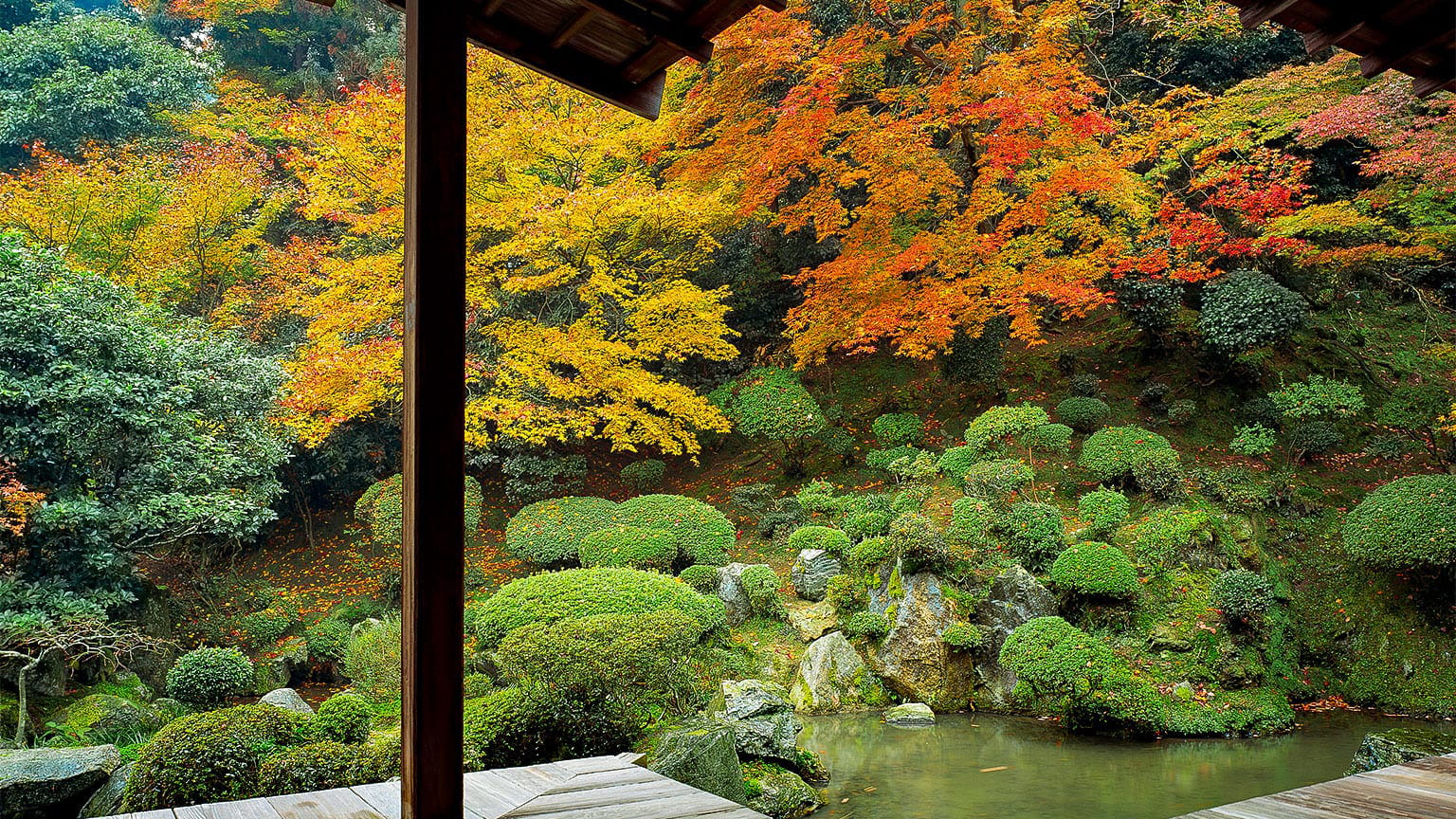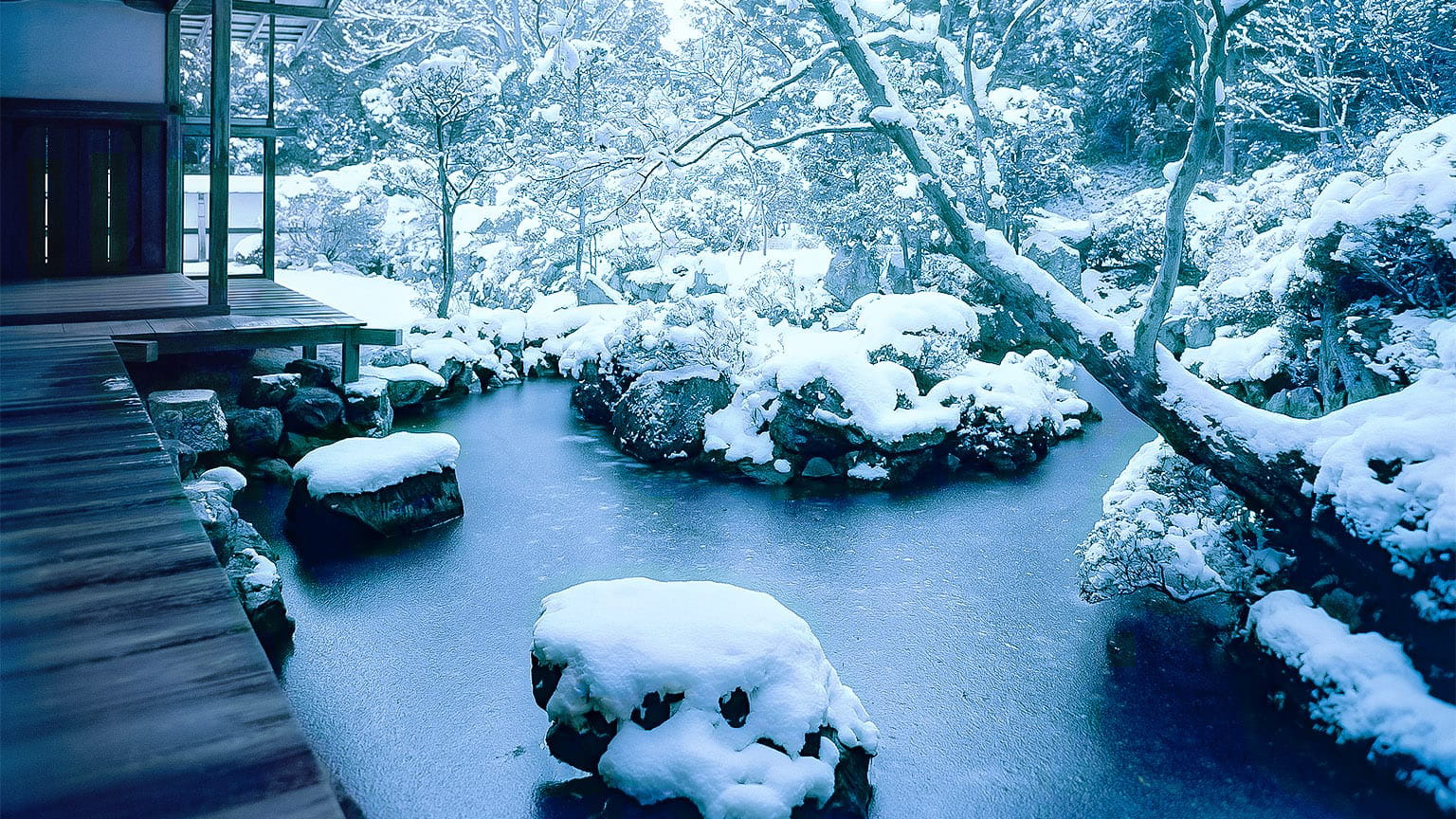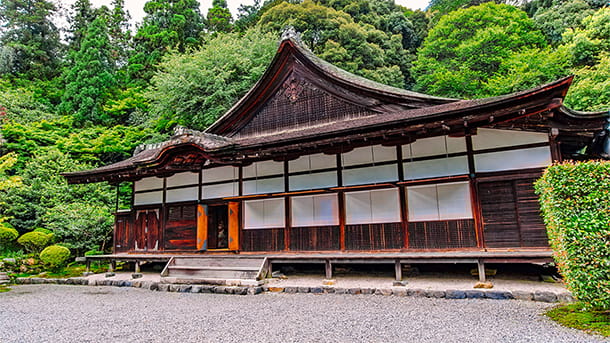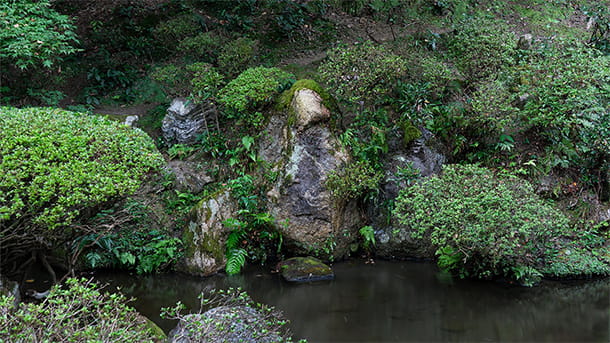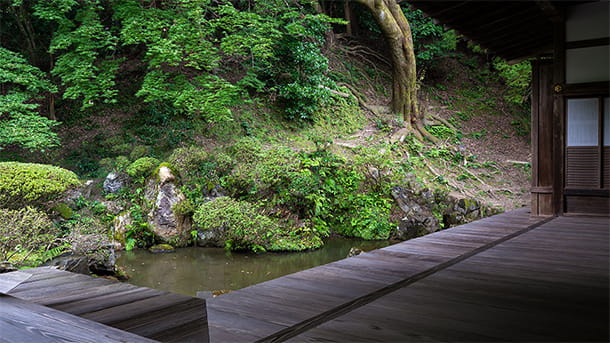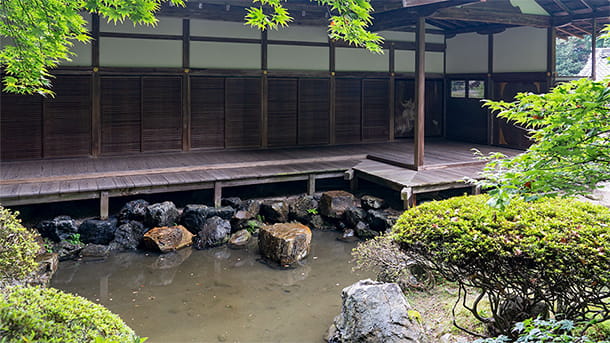Beauty Spot-Historic Site
Kojoin Garden
READER
This garden stretches away to the south of the Kojoin Reception Hall and is an example of the chisen kanshoshiki type, a style that features a footpath around a pond. It is a famous example of a splendid garden and appears as such in the Tsukiyama Niwa-zukuriden, a gardening book from the Edo period. It was formally designated as a scenic historical spot in 1934.
The pond has a central island, connected to the rest of the garden by a natural rock bridge, and a number of yodomari stones are scattered throughout the body of water to look like islands. In addition, standing stones have been assembled to form a dry “waterfall” in the central southwest section. Meanwhile, an artificial hill makes use of the natural topography, and the shade from the trees adds another dimension of contrast to the pond. The water flows underneath the veranda of the reception hall, creating a peaceful and secluded environment in which the garden and the building seem to come together as one in perfect harmony.
- −
- Muromachi Period
Please rate this cultural heritage introduction page.
-
-
Satisfaction
-
-
Understanding
-
-
Recommendation
-
-
Attractiveness
-



